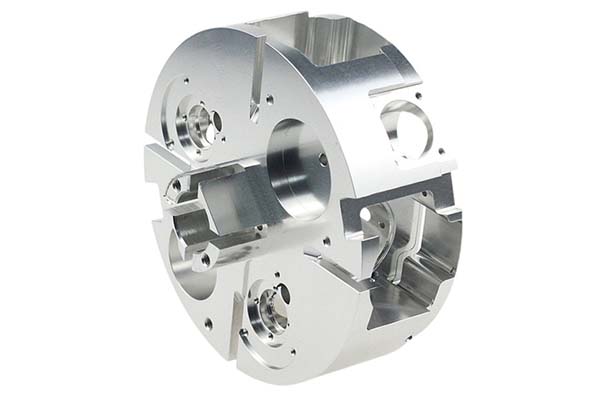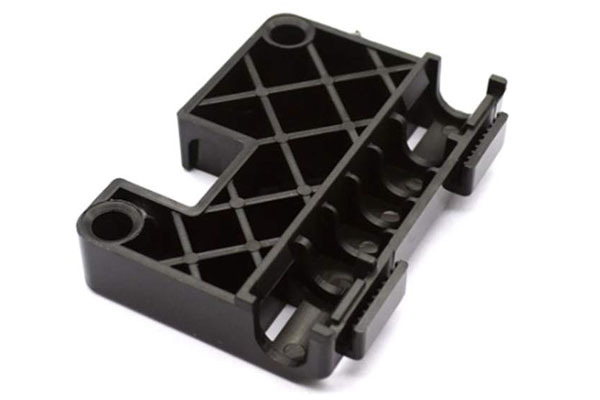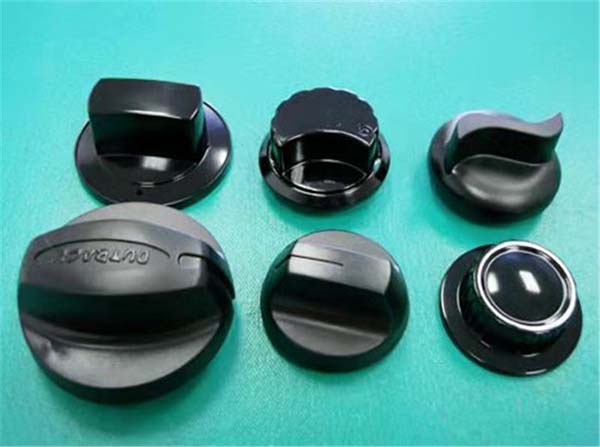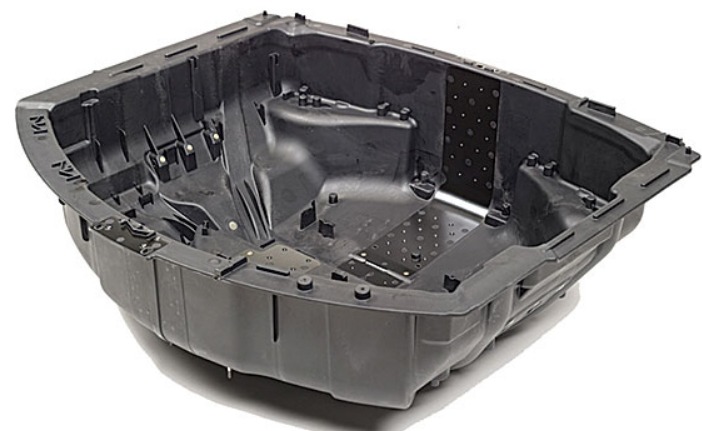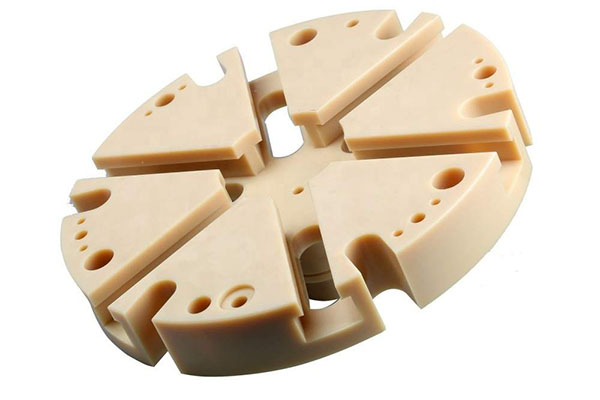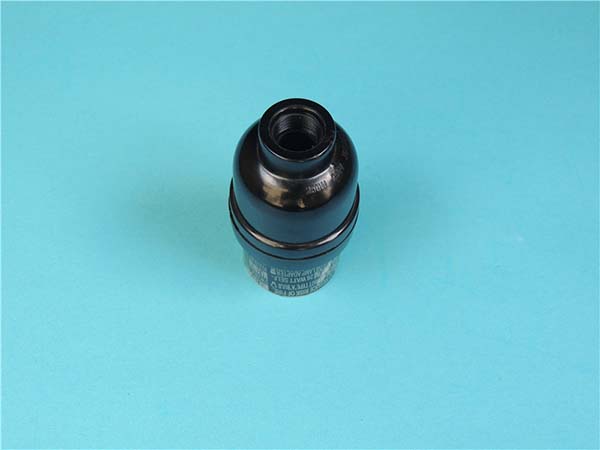1. Introduction: The Multidimensional Leap in Precision Machining
In the ever-evolving landscape of advanced manufacturing, precision machining demands solutions that balance complexity, speed, and accuracy. While 3-axis milling has long been the industry standard, 4-axis milling emerges as a transformative bridge between traditional techniques and the demands of modern engineering. By adding a rotational axis (typically the A-axis) to the classic X, Y, Z linear movements, 4-axis milling unlocks the ability to machine complex curved surfaces, intricate angles, and multi-faced components in a single setup. Yigu Technology explores how this technology provides a "multidimensional edge," dissecting its technical advantages, real-world applications, and the data-driven insights that make it indispensable for industries from aerospace to medical devices.
2. The Technical Foundation: Unraveling 4-Axis Milling Basics
2.1. What Defines 4-Axis Milling?
At its core, 4-axis milling is an advanced CNC (Computer Numerical Control) machining process that builds upon the traditional 3-axis setup. While 3-axis milling operates along the X, Y, and Z linear axes, 4-axis milling incorporates an additional rotational axis. This fourth axis, often denoted as the A-axis, rotates around the X-axis. This addition enables the milling tool to approach the workpiece from a virtually limitless number of angles, up to a full 360-degree rotation.
One of the key components enabling 4-axis milling is the rotary table. High-precision rotary tables, such as the Tsudakoma RT-200, are crucial for this process. These tables have an incredibly high positional accuracy, often within ±5 arcseconds. They securely hold the workpiece and allow for continuous rotation during machining. This rotation is synchronized with the movements of the milling cutter along the X, Y, and Z axes, creating complex toolpaths.
The software used in 4-axis milling is another critical element. Programs like Mastercam are designed to generate highly complex toolpaths. These toolpaths combine linear and rotational movements, making them ideal for creating features such as helical grooves, tapered surfaces, and cylindrical contours. For example, when creating a helical groove, the software calculates the precise combination of linear movement along the Z-axis and rotational movement around the A-axis to ensure a smooth and accurate cut.
2.2. Axis-by-Axis: A Comparative Overview
To better understand the capabilities of 4-axis milling, it's instructive to compare it with 3-axis and 5-axis milling. The following Yigu Technology table provides a detailed comparison:
| Feature | 3-Axis Milling | 4-Axis Milling | 5-Axis Milling |
| Axes | Linear (X, Y, Z) | Linear + 1 Rotational | Linear + 2 Rotational |
| Typical Applications | Flat planes, slots | Curved surfaces, angles | Free-form geometries |
| Average Machining Time | 60–90 minutes | 30–45 minutes (–50%) | 45–60 minutes |
| Accuracy | ±0.05mm | ±0.01–0.03mm | ±0.005mm |
| Ideal Components | Simple prismatic parts | Angled holes, cams, gears | Aerospace blades, medical implants |
3-axis milling is well-suited for creating flat surfaces, slots, and other relatively simple geometric features. However, its limitations become apparent when dealing with complex curved surfaces or angled features. For instance, creating a camshaft with 3-axis milling would require multiple setups and a significant amount of time to achieve the desired shape.
4-axis milling, on the other hand, can machine curved surfaces and angled features with relative ease. By adding the rotational axis, it can create features like angled holes, cams, and gears in a single setup. This not only reduces machining time but also improves accuracy. For Yigu Technology example, when machining a gear, the 4-axis mill can precisely cut the teeth at the correct angles without the need for repositioning the workpiece.
5-axis milling offers even greater flexibility, as it has two rotational axes. This allows for the machining of highly complex free - form geometries, such as those found in aerospace blades and medical implants. However, 5-axis machines are generally more expensive and require more complex programming. 4-axis milling provides a balance between the simplicity of 3-axis milling and the complexity of 5-axis milling, making it a popular choice for many applications where high precision and moderate complexity are required.
3. Core Advantages: Why 4-Axis Milling Outshines Traditional Methods
3.1. Complex Geometry Mastery
4-axis milling's superiority becomes glaringly evident when handling complex geometries. In 3-axis milling, the tool's movement is restricted to three linear directions, which poses significant limitations for machining parts with angled features, curved surfaces, or multi - face requirements.
Take, for example, the drilling of angled holes. In aerospace components like tie - down brackets, angled holes are crucial for secure fastening. With 4-axis milling, it's possible to drill holes at angles such as 45° with an angular tolerance of ±0.02mm. These brackets often need to withstand shear forces of up to 10,000N. Precise angled holes ensure a proper fit and enhanced structural integrity, which is far more challenging to achieve with 3-axis milling.
Cylindrical contours, such as those found in camshafts, are another area where 4-axis milling excels. When machining a camshaft, achieving high concentricity is essential to reduce rotational vibration in automotive engines. 4-axis milling can achieve a concentricity of 0.01mm. In a study comparing engines with camshafts machined by 3-axis and 4-axis milling, the engines with 4-axis - machined camshafts experienced a 30% reduction in rotational vibration. This not only improves the engine's performance but also extends its lifespan.
Yigu Technology Multi - face machining is yet another forte of 4-axis milling. It allows for the cutting of five sides of a workpiece in a single setup. In contrast, 3-axis milling typically requires 2 - 3 setups to machine the same number of faces. Each repositioning in 3-axis milling risks introducing positional errors. For instance, when machining a complex die, 4-axis milling can complete the multi - face machining in one operation, ensuring consistent dimensional accuracy across all faces, while 3-axis milling might result in cumulative errors due to multiple setups.
3.2. Efficiency Through Reduced Setup
One of the most significant advantages of 4-axis milling is the reduction in workpiece repositioning, which directly translates to increased efficiency and improved accuracy.
A medical device manufacturer provides a compelling case study. When producing orthopedic implants, the setup time for 3-axis milling was 4 hours per batch. This included the time to secure the workpiece, align the tool, and program the machine for each operation. With 4-axis milling, the setup time was reduced to just 90 minutes. This 40% reduction in setup time allowed the manufacturer to accelerate batch production significantly. Faster setup times mean more batches can be produced in a given time frame, increasing overall productivity.
Moreover, fewer setups mean fewer chances for human error. In the production of high - precision gears, 3-axis milling typically achieves a first - pass yield of 95%. The need for multiple setups increases the risk of misalignment, incorrect toolpath programming, or improper workpiece clamping. In contrast, 4-axis milling, with its single - setup approach, achieves a first - pass yield of 99.8%. This high yield not only reduces waste but also lowers production costs associated with rework or scrapping defective parts.
3.3. Material Removal Rate (MRR) Optimization
4-axis milling machines often feature high - speed spindles, which contribute to an optimized Material Removal Rate (MRR). For example, the Haas VF-4, a popular 4-axis milling machine, is equipped with a 12,000 RPM spindle. When machining aluminum, it can achieve an MRR of 150 cm³/min, which is twice as fast as many 3-axis counterparts.
This high MRR is especially crucial for rapid prototyping. Consider a complex valve body prototype. On a 3-axis milling machine, it took 8 hours to machine the prototype. However, on a 4-axis milling machine, the same prototype was machined in just 4.5 hours, while maintaining an identical surface finish of Ra 1.6μm. The ability to quickly remove material without sacrificing surface quality allows for faster iteration during the prototyping phase. This is beneficial for companies looking to bring new products to market quickly, as it reduces the time from concept to prototype, enabling more efficient product development cycles.
4. Industry Applications: Where 4-Axis Milling Shines Brightest
4.1. Aerospace: Crafting High-Performance Components
In the aerospace industry, precision is not just a requirement; it's a matter of life and death. 4-axis milling has become an essential technology for manufacturing high - performance components that must withstand extreme conditions.
Turbine engine components, such as compressor blades, are a prime example. These blades are designed with complex geometries to optimize airflow within the engine. Using 4-axis milling machines, manufacturers can create compressor blades with a 15° twist angle. This precise angle is crucial for ensuring efficient airflow, which in turn reduces fuel consumption. In fact, engines with 4-axis - milled compressor blades have shown a 5% reduction in fuel consumption compared to those with conventionally - manufactured blades. The profile accuracy of these blades can reach ±0.03mm, ensuring that the blades fit perfectly within the engine housing and operate smoothly.
Aircraft structural parts also benefit significantly from 4-axis milling. Lightweight titanium alloy brackets, for instance, are a common component in aircraft. These brackets often have a thickness of 2mm and feature 30° tapered edges. 4-axis milling allows for the machining of these brackets with zero deformation. This is crucial because any deformation could compromise the structural integrity of the aircraft. These brackets are designed to meet FAA fatigue standards for 50,000 flight cycles. The high - precision machining capabilities of 4-axis milling ensure that these brackets can withstand the repeated stresses experienced during flight, contributing to the overall safety and reliability of the aircraft.
4.2. Medical Devices: Precision for Life - Saving Tools
The medical device industry demands the highest level of precision, as the products manufactured are often used in life - saving procedures. 4-axis milling plays a vital role in creating these critical components.
Orthopedic implants, like hip stems, are designed to replace damaged or diseased joints. Hip stems made from Cobalt - Chromium alloy are milled with a 10° neck angle. This angle is carefully engineered to ensure proper alignment with the hip socket, promoting better joint function. The surface roughness (Ra) of these hip stems can be as low as 0.02mm. A smooth surface is essential for promoting osseointegration, the process by which the implant fuses with the surrounding bone. In fact, implants with a surface roughness of 0.02mm have shown a 95% osseointegration rate, significantly reducing the risk of post - surgical complications such as implant loosening.
Surgical instruments also rely on 4-axis milling for their precision. Micro - milled stainless steel forceps, for Yigu Technology example, are used in minimally invasive surgeries. These forceps have 45° angled tips with a tip diameter of 0.5mm. The positional accuracy of these tips is ±0.01mm. This high level of accuracy allows surgeons to perform delicate tissue manipulation with minimal damage to surrounding tissues. In procedures such as microsurgery, where the margin for error is extremely small, the precision offered by 4 - axis - milled surgical instruments is invaluable.
4.3. Automotive: Driving Innovation in EV and Classic Manufacturing
The automotive industry is constantly evolving, and 4-axis milling is at the forefront of innovation, especially in the development of electric vehicles (EVs) and classic car restorations.
In the realm of EV components, 4-axis - machined copper rotors for EV motors are a game - changer. These rotors feature 20° helical slots with a width tolerance of ±0.01mm. The precise machining of these slots reduces electromagnetic interference by 40%. This reduction in interference is crucial for the smooth operation of the motor. As a result, the motor efficiency is boosted to 96%. Higher motor efficiency means longer driving ranges for EVs, making them more appealing to consumers.
For classic car restorations, 4-axis milling is used to preserve the original designs of vintage engine parts. Consider a 1950s carburetor body. These carburetors often have complex geometries with 30° draft angles. 4-axis milling allows for the machining of these parts with 99% dimensional fidelity to the historical blueprints. This high level of accuracy ensures that the restored parts not only look authentic but also function as they did when the car was originally manufactured. It allows classic car enthusiasts to maintain the integrity of these vintage vehicles while still benefiting from modern machining techniques.
5. Conclusion: The Indispensable Edge of 4-Axis Milling
Yigu Technology 4-axis milling has emerged as a cornerstone technology in modern precision machining, offering a "multidimensional edge" that is redefining the possibilities for manufacturing high - performance components. This technology is not just an incremental upgrade from 3-axis milling; it represents a paradigm shift in the way we approach complex machining tasks.
By adding a rotational axis, 4-axis milling has unlocked the ability to create complex geometries that were previously challenging or impossible to achieve with traditional 3-axis setups. It has demonstrated remarkable capabilities in machining angled holes, cylindrical contours, and multi - face components with exceptional precision. This precision is crucial for industries such as aerospace, where even the slightest deviation can have catastrophic consequences.
The efficiency gains offered by 4-axis milling are equally significant. Reduced setup times and optimized Material Removal Rates (MRR) translate into shorter production cycles and lower costs. This is a game - changer for companies looking to remain competitive in a global market that demands faster turnaround times without sacrificing quality.
The real - world applications of 4-axis milling across industries like aerospace, medical devices, and automotive manufacturing further underscore its importance. In aerospace, it enables the production of components that can withstand extreme conditions, contributing to safer and more fuel - efficient aircraft. In the medical device industry, it ensures the creation of life - saving implants and surgical instruments with the highest level of precision. And in the automotive sector, it is driving innovation in both electric vehicle development and classic car restorations.
FAQ
Q1: How does 4-axis milling compare to 5-axis milling in terms of cost?
A1: 4-axis milling machines are generally more cost - effective than 5-axis milling machines. The initial investment for a 4-axis mill is lower, and the programming and operation are less complex, reducing the need for highly specialized personnel. However, 5-axis milling offers greater flexibility for extremely complex geometries.
Q2: Can 4-axis milling be used for mass production?
A2: Yes, 4-axis milling can be used for mass production. Its ability to reduce setup times and improve machining efficiency makes it suitable for high - volume production runs. The high accuracy also ensures consistent quality across multiple parts.
Q3: What types of materials are best suited for 4-axis milling?
A3: 4-axis milling can handle a wide range of materials, including metals such as aluminum, steel, and titanium, as well as plastics and composites. The choice of material depends on the specific requirements of the component, such as strength, weight, and heat resistance.

